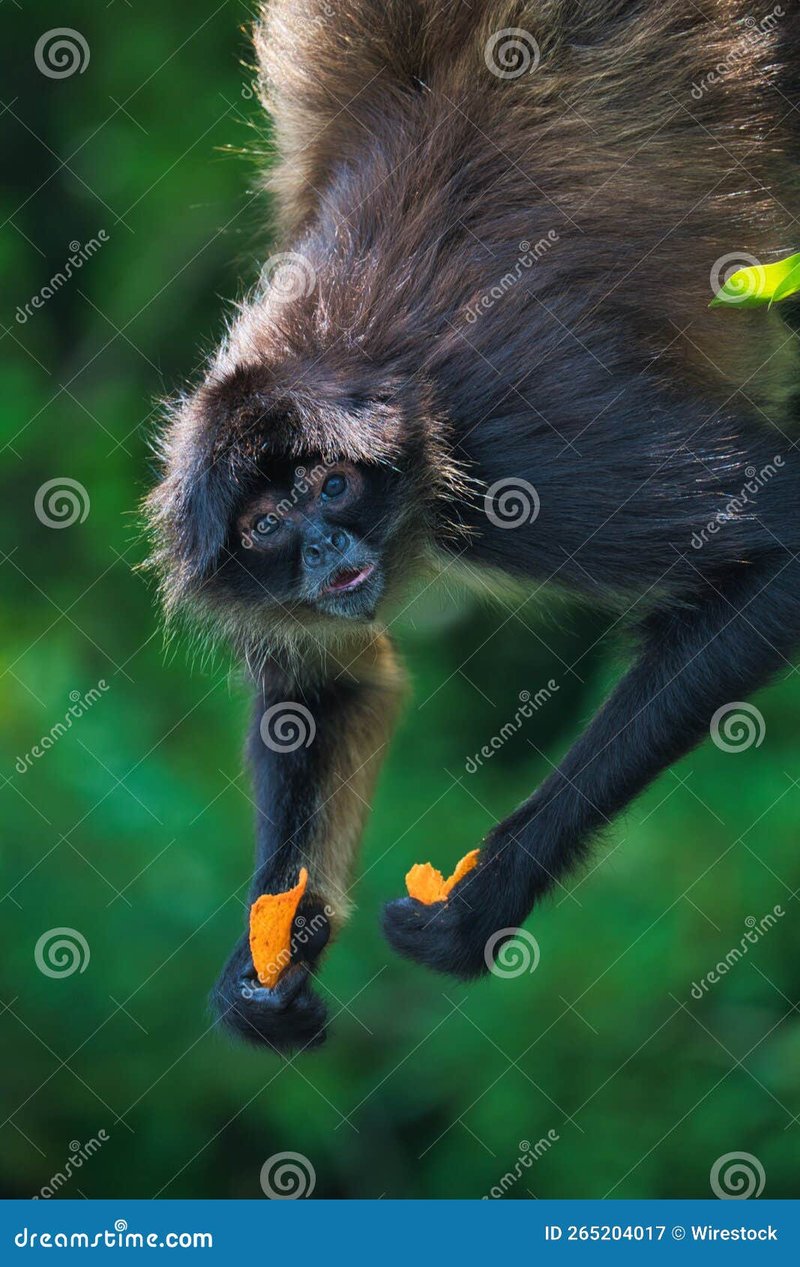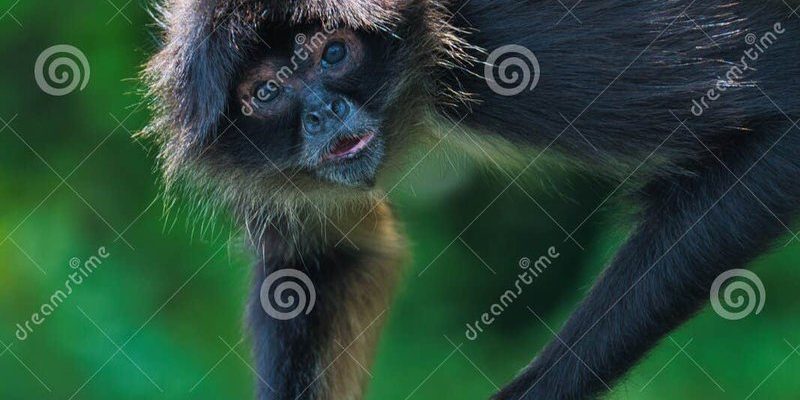
Spider monkeys primarily thrive in the lush, green expanse of Central and South American rainforests. They are a vibrant part of the ecosystem, playing a key role in maintaining the health of their habitat. But what do they eat, and how do they hunt for their food? These questions highlight a unique aspect of their behavior that has captivated scientists and nature lovers alike.
Now, let’s explore the details of their diet and hunting strategies. After all, understanding how these monkeys live can give us deeper insights into their world and the delicate balance of their ecosystems.
What Do Spider Monkeys Eat?
Spider monkeys are primarily frugivorous, which means they feast on fruits. But their diet is more diverse than just fruits alone. Depending on the season and geographical location, they will munch on a variety of foods. Their favorites include:
- Fruits: They have a sweet tooth for ripe bananas, figs, and berries.
- Flowers: In addition to fruits, they also snack on blossoms.
- Leaves: Though less common, they’ll munch on young leaves when fruits are scarce.
- Seeds and Nuts: They occasionally include these protein sources in their diet.
Spider monkeys can consume up to 2–5 pounds of food each day, thanks to their agile bodies and long limbs, which allow them to reach high into the trees. This fruit-heavy diet plays a significant role in their social interactions, as they often eat together in groups, sharing the bounty of the forest.
How Do Spider Monkeys Forage for Food?
Foraging is an essential part of a spider monkey’s daily routine. They use their keen sense of smell and sharp eyesight to locate food high up in trees. Here’s how they do it:
1. Visual Scanning: Spider monkeys have excellent vision, allowing them to spot ripe fruits from a distance. They often stay perched high up, scanning the canopy for their next meal.
2. Social Foraging: These monkeys are social creatures and often forage in groups. This not only helps them find food faster but also provides safety in numbers from predators.
3. Foraging Techniques: With their long limbs and prehensile tails, they swing effortlessly from branch to branch. If they find a cluster of bananas or figs, they can rapidly harvest them using their agile arms and strong tails.
Through these innovative methods, spider monkeys adapt to seasonal changes, making sure they have enough food, even when some options become scarce.
The Role of Spider Monkeys in Their Ecosystem
You might be wondering why the diet and foraging habits of spider monkeys matter. Their eating habits are crucial for the health of their rainforest habitat. Here’s how:
– Seed Dispersal: As spider monkeys eat fruits, they inadvertently spread seeds through their droppings. This helps in planting new trees and maintaining biodiversity in the rainforest.
– Plant Pollination: While foraging, they also help in pollinating certain flowers, contributing to the overall growth of plant species.
– Ecosystem Balance: By being part of the food chain, they help control the populations of certain fruit-bearing trees, ensuring that the forest remains balanced.
When spider monkeys thrive, their environment flourishes, showcasing the interconnectedness of nature.
Spider Monkey Hunting Strategies
Unlike other primates that might hunt smaller animals, spider monkeys mainly rely on their foraging skills. However, they do have specific strategies that help them maximize their food gathering:
1. Teamwork: When spider monkeys forage together, they cover more ground. By splitting up and scouting different areas, they can locate food more efficiently.
2. Vocal Communication: They use a range of vocal sounds to communicate with one another while foraging. This helps them alert each other to food sources or potential dangers.
3. Memory Skills: Spider monkeys have impressive memory capabilities. They can remember the locations of fruiting trees and revisit them during seasonal changes.
This clever combination of skills allows them to adapt their hunting strategies based on their environment and the availability of food.
Challenges in Spider Monkey Diet and Foraging
Despite their adaptability, spider monkeys do face challenges when it comes to finding food. Here are some issues they encounter:
– Habitat Loss: Deforestation and habitat destruction from agriculture and logging can limit the availability of their food sources. This not only affects their diet but also their population stability.
– Climate Change: Changes in climate can impact fruiting seasons and the types of plants available, making it harder for spider monkeys to find their preferred foods.
– Human Interaction: As humans encroach upon their territories, spider monkeys may be pushed into smaller areas, making food scarcer.
The struggle for survival highlights the need for conservation efforts to protect their habitats and ensure their future.
How Can We Help Spider Monkeys?
If you’re touched by the challenges faced by these amazing creatures, there are ways to support their conservation:
– Support Rainforest Conservation: Get involved with or donate to organizations that work to protect rainforest habitats.
– Be a Conscious Consumer: Choose products that are sustainably sourced and help keep forests intact.
– Spread Awareness: Share knowledge about spider monkeys and their role in the ecosystem. The more people know, the more we can work together to protect them.
Every small action contributes to a larger movement towards preserving the delicate ecosystems that spider monkeys call home.
Wrapping It Up
Understanding the diet and hunting strategies of the spider monkey gives us a peek into the intricate dance of life in the rainforest. These monkeys are not just curious creatures swinging through the trees; they are vital players in their ecosystem. Their foraging habits, social structures, and the challenges they face highlight the importance of protecting their habitats.
By appreciating these wonderful animals and taking steps to help them, we contribute to the preservation of our natural world. Let’s keep the conversation going and ensure that spider monkeys continue to thrive in their environments for generations to come.

